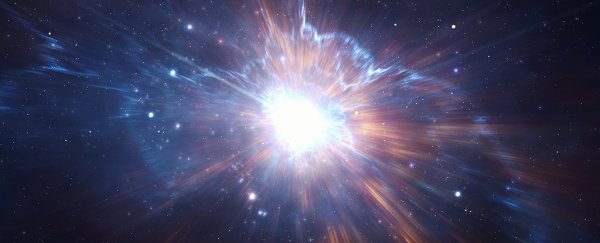Dark matter, or at least a portion of it, could be carrying an incredibly weak electrical force - equal to about a millionth of an electron's charge. That's according to data from the Experiment to Detect the Global Epoch of Reionisation Signature (EDGES).
Though controversial, the potential for even the tiniest interactions between this mysterious form of matter and the more familiar varieties could provide the crucial evidence needed to explain the missing quarter of the Universe.
Astronomers from the Harvard-Smithsonian Center for Astrophysics in Massachusetts had already gone back to the drawing board on dark matter when the results of the EDGES project were published earlier this year.
"The nature of dark matter is one of the biggest mysteries in science and we need to use any related new data to tackle it," says theoretical physicist Avi Loeb from the Center for Astrophysics.
Dark matter is one of the sharpest thorns in the paw of astronomy today. It makes up something like 23 percent of the entire Universe – 80 percent if we're just talking about the building blocks of matter.
But as the name suggests, it doesn't exactly burn brightly with clues advertising its true nature. We know it exists because something extra seems to be holding galaxies together, other than the shiny stuff we can measure.
So far we've got practically nothing. Big hopes were pinned on the XENON1T experiment finding some sort of weakly interacting particle, but so far all it's managed to do is limit its possible size to an incredibly tiny mass.
There's little reason to think that dark matter makes its presence known through any force other than gravity. Some physicists have speculated that dark matter can potentially exhibit forces other than gravity, but evidence supporting it is thin.
Now an unexpected shift in the data provided by the EDGES experiment just might provide some of that missing evidence.
The Epoch of Reionisation referred to in the EDGES acronym covers a period in the history of the Universe roughly 200 million years after the Big Bang. Atoms of hydrogen had only recently congealed out of the soup of charged particles as expanding space cooled, and were being washed in the glow of the first stars.
This shower of UV radiation punched electrons from the atoms, ionising the hydrogen once again and allowing the atoms to absorb a small amount of the background radiation still echoing through space from the Universe's beginnings.
EDGES created a profile of the sky's radio waves that could be used to describe the behaviour of the radiation-absorbing hydrogen during this crucial period of cosmic history.
While the data is still fresh and yet to be critically pulled apart by the astronomical community, early reports are noting the hydrogen's temperature is only half of what models predicted.
"If EDGES has detected cooler than expected hydrogen gas during this period, what could explain it?" says the study's lead author, cosmologist Julian Munoz from Harvard University.
"One possibility is that hydrogen was cooled by the dark matter."
Separated from their electrons and yet to be stirred up by other astronomical weather, these clouds of ionised hydrogen would still be slow enough to feel the tiny pull of even the smallest of charges.
At a millionth of the electromagnetic pull of an electron, this tiny nudge from a small proportion of dark matter particles would be all but invisible today, but would be enough to cool slow-moving hydrogen.
If it feels like grabbing at straws, we're more or less at that stage when it comes to this frustrating mystery.
Loeb and Munoz insist their model doesn't rely on the EDGES results, but simply offers a unique take on some of its more unexpected numbers.
"We're able to tell a fundamental physics story with our research no matter how you interpret the EDGES result," says Loeb.
Future studies of this epoch will either refute the idea or expand on dark matter's potential brighter side.
This research was published in Nature.
